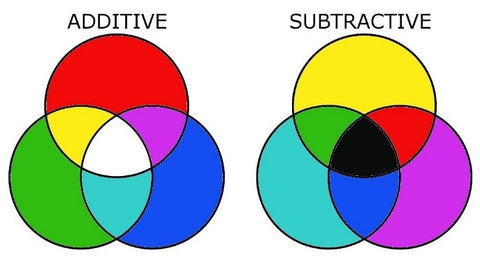
Complementary Colours - How to Use them in a Painting
Share

Complementary Colours in Traditional Model
What are Complementary Colours?
In simple terms complementary colours sit opposite each other on the colour wheel. They can be used in two different ways, you can mix a small amount of a colours complement to dull it down or larger amounts to ‘grey’ it. You can also put the complementary colours next to each other on your canvas to make your colours more vibrant to make them ‘sing’. So by using complements in a painting you can enhance the effects of the colour.
Ok, so this seems easy red-green, blue-orange, yellow-violet are all in theory complements.
Hence in our Venetian Gondolas Painting, here is the original pic...

Photo by Boris Ulzibat from Pexels
I immediately think of complementary colours blue-orange.
But….
Mixing vs. Visual Complements
I was reading an article in ‘The Artist’ a long time ago now. The article was by Hilary Page and she was explaining about a whole new scientific theory on what the complements are, it is a fantastic article and well worth a read. She uses the mixing complements red-green, blue-orange and yellow-violet but looks at ‘visual’ complements in a whole different light.
So from this article it is my understanding that science shows that colours peak their wavelengths in different places and when you look at colours that are neutral (greys, black and white) they are flat lined. Hence if you add two complements together you get a flat lined result. And here is the thing – the flat lined result is not produced from the complements that we get from our colour wheel, the one I use in class!
Hilary suggests it is scientifically proven that the complement of yellow is not violet it is blue because it is blue and yellow that peak in a way that combined form a flat line. She also suggests a whole host of other complements within a table for you to try.
I had a ‘lightbulb’ moment… when preparing the Sunflower Workshop I had tried Violet as a Complement to the Yellow but then preferred the Yellow-Blue combination. I was unable to understand why this, to my eye, had popped more but now this makes sense.
When we are looking at a picture we are following visual rules rather than mixing rules… this brings us to the Additive vs. Subtractive Colour Wheel.

Additive vs. Subtractive Colour Wheel
The first wheel illustrates the Additive or RGB wheel, representing light so for example our computer screens mix colour using this wheel; it is an additive wheel as by adding all the primaries together you will get white.
Whereas in a subtractive colour wheel which is the type of colour wheel used when mixing pigment in for example inkjets and also for pigments in our paintings it is a CMYK colour wheel.
When pigments are added together they make an optical black so our paint uses a subtractive system, further information on Additive Colour vs. Subtractive Colour including a pigment colour wheel can be found here.
Complementary Colours and the Colour Wheel
So when Hilary Page talks about ‘mixing’ vs. ‘visual’ complements she is talking about the use of two colour systems, the subtractive for the colour ‘mixing complements’ and the additive for the ‘visual complements’ as it is how light is seen by the eye that counts when seeing something visually.
Interesting! Well it is for me…
But then really it doesn’t matter, as long as we take on board what can help with our paintings so if you look at Hilary Page’s Complementary Colour table, she provides some great examples for us to try out, so I’m going to try them, hopefully in class too.
I painted the Venetian Gondolas, and here they are:

Or are you ready to embark on this creative adventure with us? Tune in to my 'Art Alchemy Podcast' which I co-host with Ruth Egon another artist from Dunfermline and let the magic of art transform your world.
Interested in learning? I have a new free mini-course Embracing Imperfection: A Guide to Painting Loose where you can get a peek inside the Art Hub Community a new online community setup by myself and Ruth (my Podcast co-host) to sign up click HERE
We will be launching the community for a September start so I'll keep you in touch on my mailing list, there's a free live at the end of August for you to look around, you can also Contact Me for more details.
